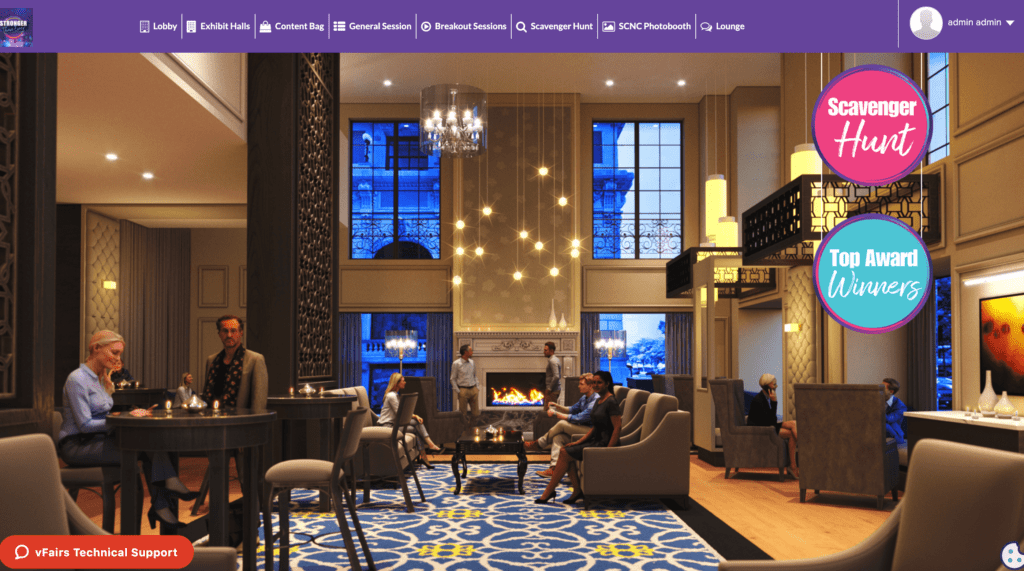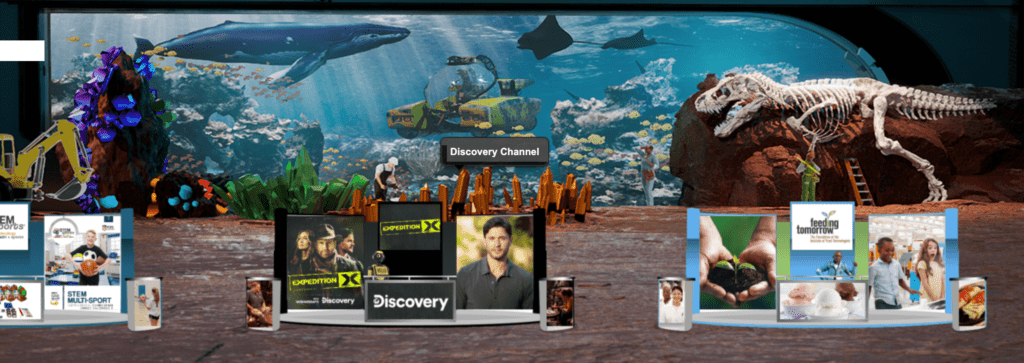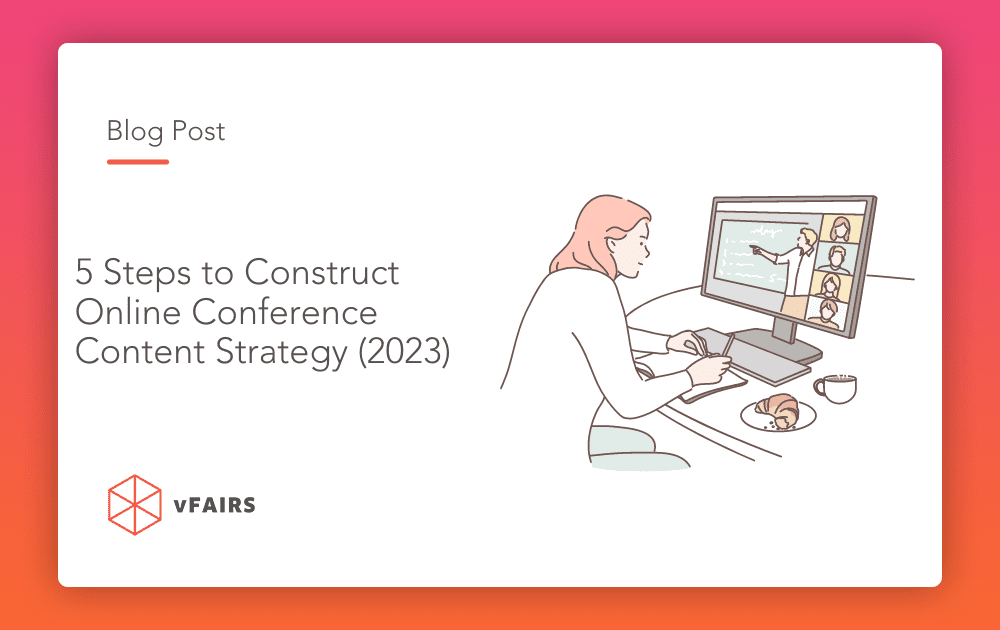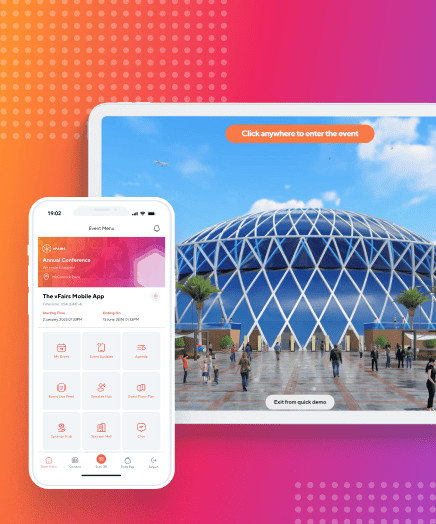To set up a successful event, whether virtual or in-person, you need to put a solid content strategy in place. This includes the design, creation, and management of engaging content – across websites, social media platforms, newsletters, and everywhere else your target audience resides.
A strong conference content strategy is vital to inspiring, informing, and raising awareness about your brand and its reputation as a thought leader in the industry. This article will guide you in constructing a fool-proof content strategy for your next Online Conference.
Step 1: Determine your event type and client profile
Target audience research is important for all marketing strategies. Who is your target audience? What is it looking for? What are your company objectives, and do you require a meeting, conference, or summit to fulfill them?
Streamline your goals and user needs to bring them in line with your content efforts. Simply put – everything you do related to the content should resonate with those predetermined conditions.
Step 2: Plan the visual experience

i. Landing page
To set up a compelling homepage, get creative, and look for design inspiration. Your vendor should be able to share ideas and templates in order to help you brainstorm content for the following:
- Title of the event: Remember to keep it short and sweet (and in sync with your event domain address)
- Event date and timings: People need to know what time they should tune in. Don’t forget to mention time zones! People could be tuning in from various parts of the world.
- Speaks and agenda: The landing page will be a summary of who is participating, what to expect, why visitors should participate, and quick overviews of all things important for the audience to know. Ensure a power-packed introduction that will motivate your audience to register without any delays.
- Cover image and logos: Put a loud and clear mark on your audience by using essential branding options for your homepage and high-resolution logos.
- Attendee Registration: Determine the information you would like to collect from your audience and add the necessary fields on your registration form.
- Registration Communication: Prepare drafts for attendee correspondence (once an individual registers for your event, they will receive an automatic registration confirmation email and a thank you note).
ii. Lobby Design

The hub of all event navigation, the “Lobby”, is the area your visitors will be routed to the second they register and log in.
- Virtual environment: Choose if you’d prefer an animated or static lobby and review available designs/samples from past events (our recommendation: An animated lobby delivers a stronger “wow” factor to greet guests.
- Banners and logos: Decide lobby banners and logos corresponding to exhibitors and event sponsors, just as in a physical conference
iii. Exhibitor Hall
Similar to the lobby, the “Exhibitor Hall” in a Virtual Conference is totally configurable to cater to your content preferences including:
- Hall background image
- Booths layout
- Static staff avatars
iv. Auditorium Design
This is the hub of all your tremendous webinars. Gear up to explore auditorium design options with your event provider and make an impact with your audience with posters and logos.
Click here to see how a virtual event mimics the physical experience.
Step 3: Piece Together Content for Booths

Now that you’re done setting up a visually impressive, eye-opening, jaw-dropping experience for your attendees, it’s time to add some value for their consumption.
The virtual platform accommodates formats including documents, videos, presentations, picture galleries, live or pre-recorded webinars, and much more, to set up an engaging online conference. This gives exhibitors a large range of options to deliver and cater to their audiences.
Step 4: Plan out a webinar schedule
Webinars have proven to help marketers generate more qualified leads time and again and engage audiences. Especially as the world has recently switched to an entirely digital frontier, the demand, as well as the engagement at webinars has risen tremendously.
Creating a webinar schedule that accommodates the schedules of your audience as well as speakers is key to your online conference’s success. According to recent trends, people prefer to attend webinars on Tuesdays, Wednesdays, and Thursdays. Moreover, 11 a.m. to 2 p.m. are the best times to host a webinar.
Your landing page should ideally consist of a clear schedule of your webinars, the topics of discussion, and the speakers appearing – for those who wish to hop in during the hours of their interest.
Pro tip: Focus on providing a seamless user experience for your desktop and mobile audience, as well as generating high-quality evergreen content for future promotions.
Step 5: Promote your event
There’s a lot that you can do here. Promote your landing page on social media by publishing event announcements, updates, and sneak-peeks. Dip your toes into content marketing and publish blogs. You can also put up pop-ups across your website or even send out PRs.
Grab audience attention and provide them with relevant information that helps them understand what your event entails and eventually sign up for it. Do not forget to link this content with a simple and direct call to action,
Conclusion
Online Conferences are a great way to bring together people with similar interests and motives. They also help maintain social distancing at a time when the world has accepted that COVID-19 may never truly go away. Organizations of varying sizes are all moving towards virtual alternatives and this makes it harder for your conference to stand out in a competitive environment.
Therefore, now is the time to build a killer conference content strategy to cut through increasing competition and make an impact in order to attract, engage, educate and convert global audiences effectively.


